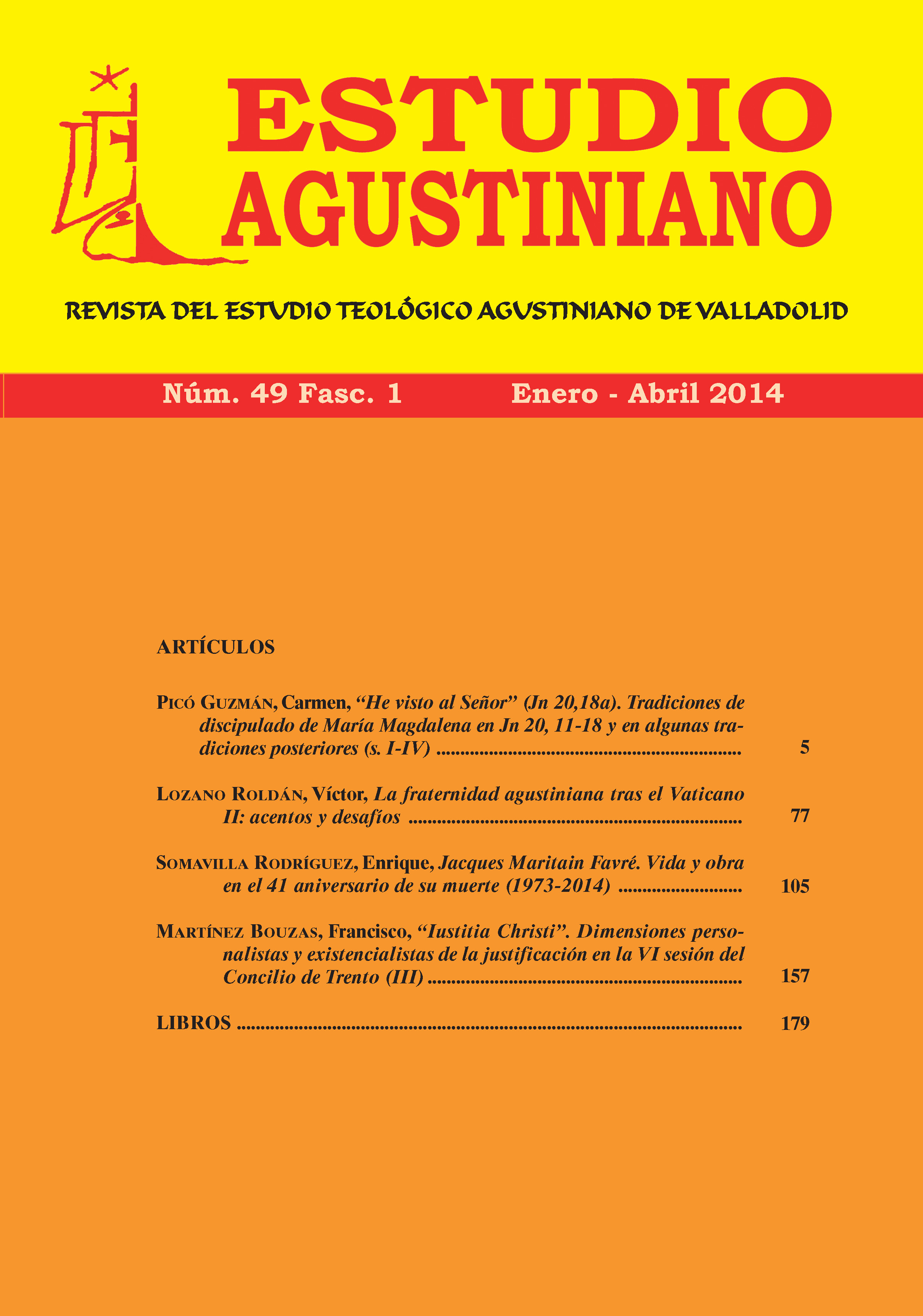“He visto al Señor” (Jn 20,18a).
Tradiciones de discipulado de María Magdalena en Jn 20, 11-18 y en algunas tradiciones posteriores (s. I-IV). I
DOI:
https://doi.org/10.53111/estagus.v49i1.156Keywords:
Mary Magdalene, I have seen the Lord, History of traditions, Appearance story Gattung, Gospel of Peter, Epistula apostolorum, Celso, Gospel of Mary, Dura EuroposAbstract
«I have seen the Lord» are Mary Magdalene’s words that the Gospel of John includes in its first appearance story. These words are indicative of her personal experience of the resurrection as well as of her authority inside the community as sent by the Lord to proclaim her Easter experience. The goal of the present work is to analyze the literary and semantic context of the johannine text to understand the meaning of this expression and the traditions supporting it as an authoritative testimony inside the Fourth Gospel. Finally, based on the history of the traditions, we will search for those traditions that supported our story and gave credibility inside the communities that listened to it. Afterwards, we will analyze the impact that this testimony had in the early history of the Christian communities by studying the early Christian texts that collected this tradition.
Downloads
Published
Issue
Section
License
Copyright (c) 2021 Estudio Agustiniano

This work is licensed under a Creative Commons Attribution-NonCommercial-NoDerivatives 4.0 International License.




